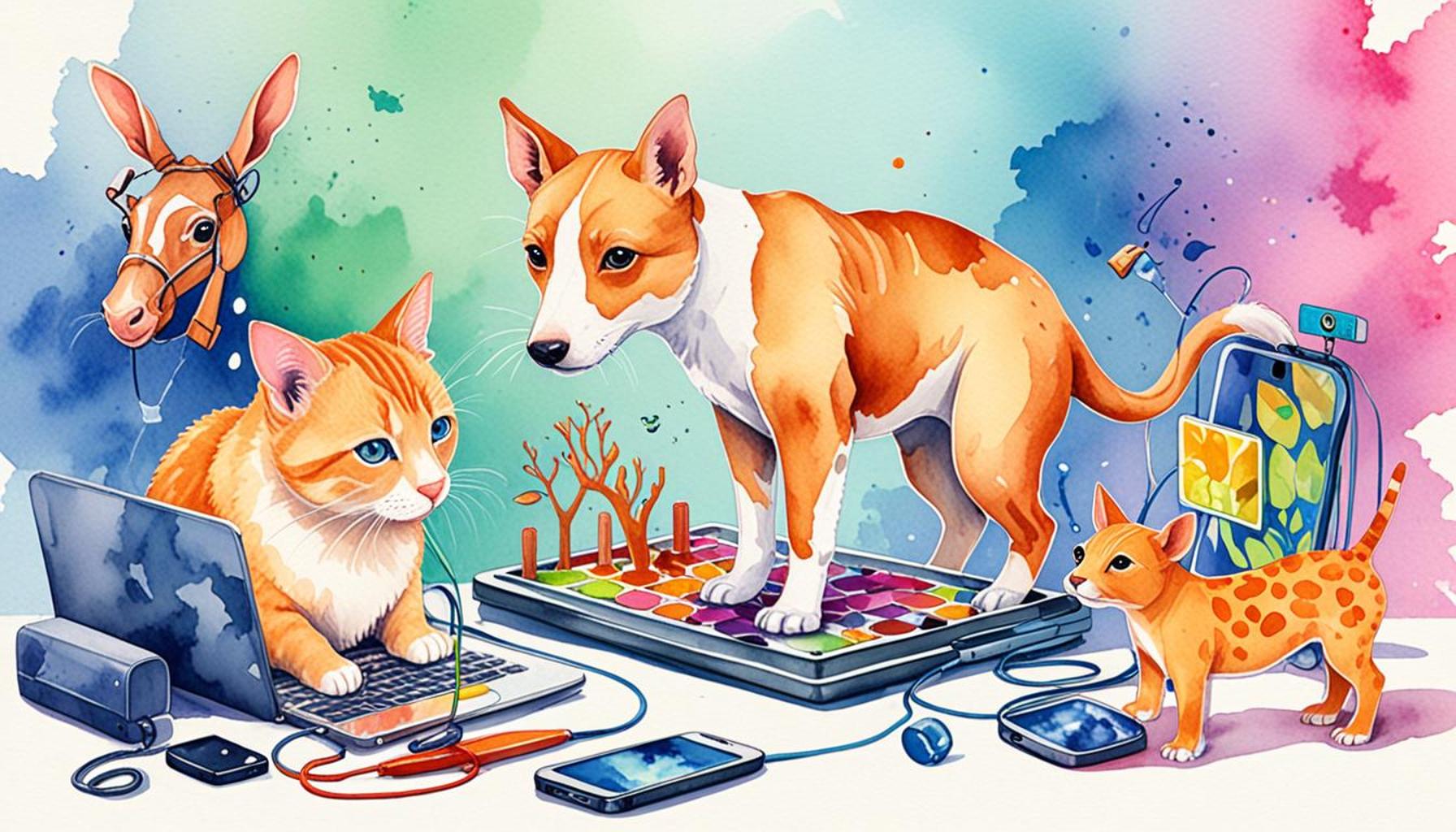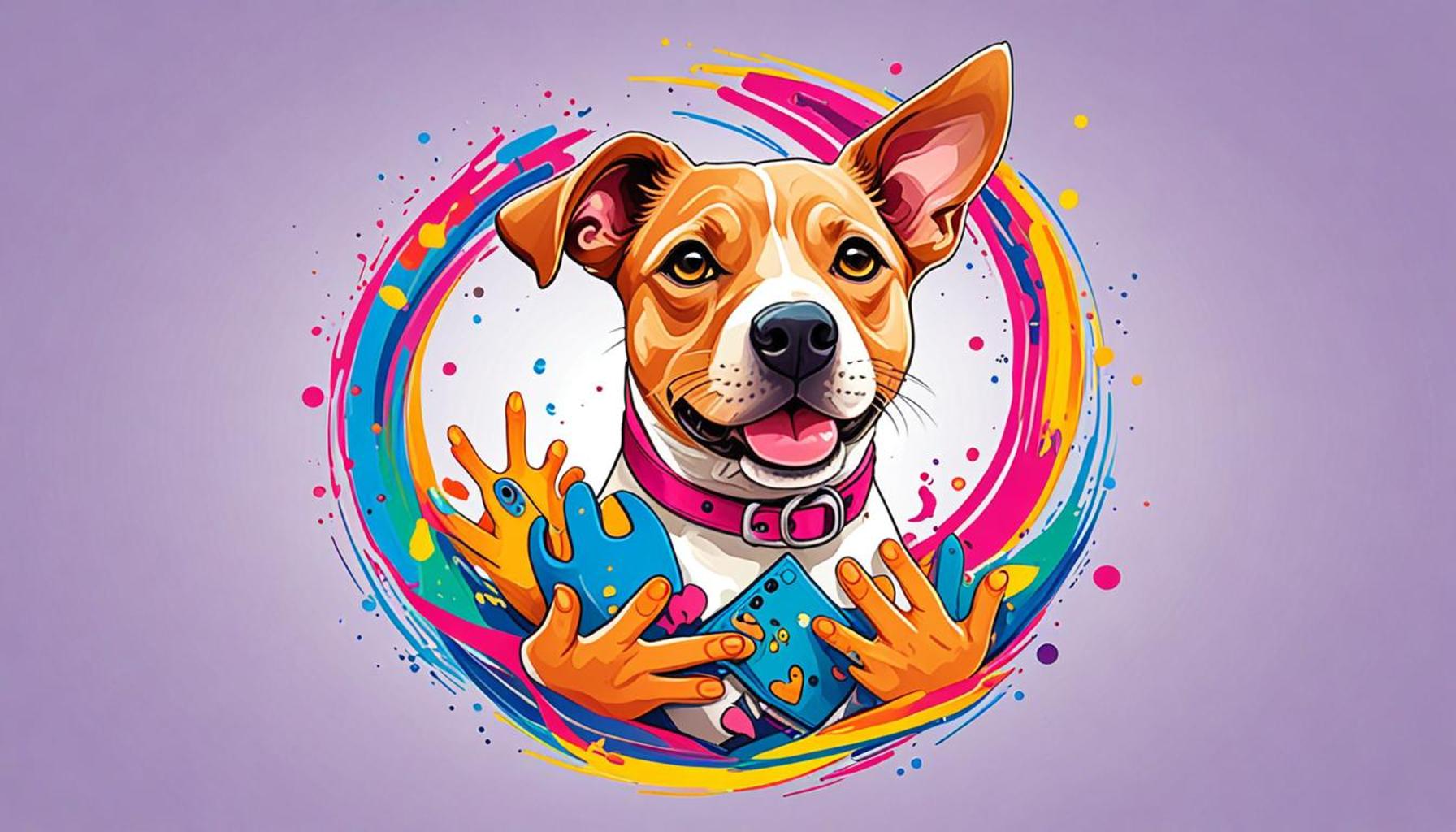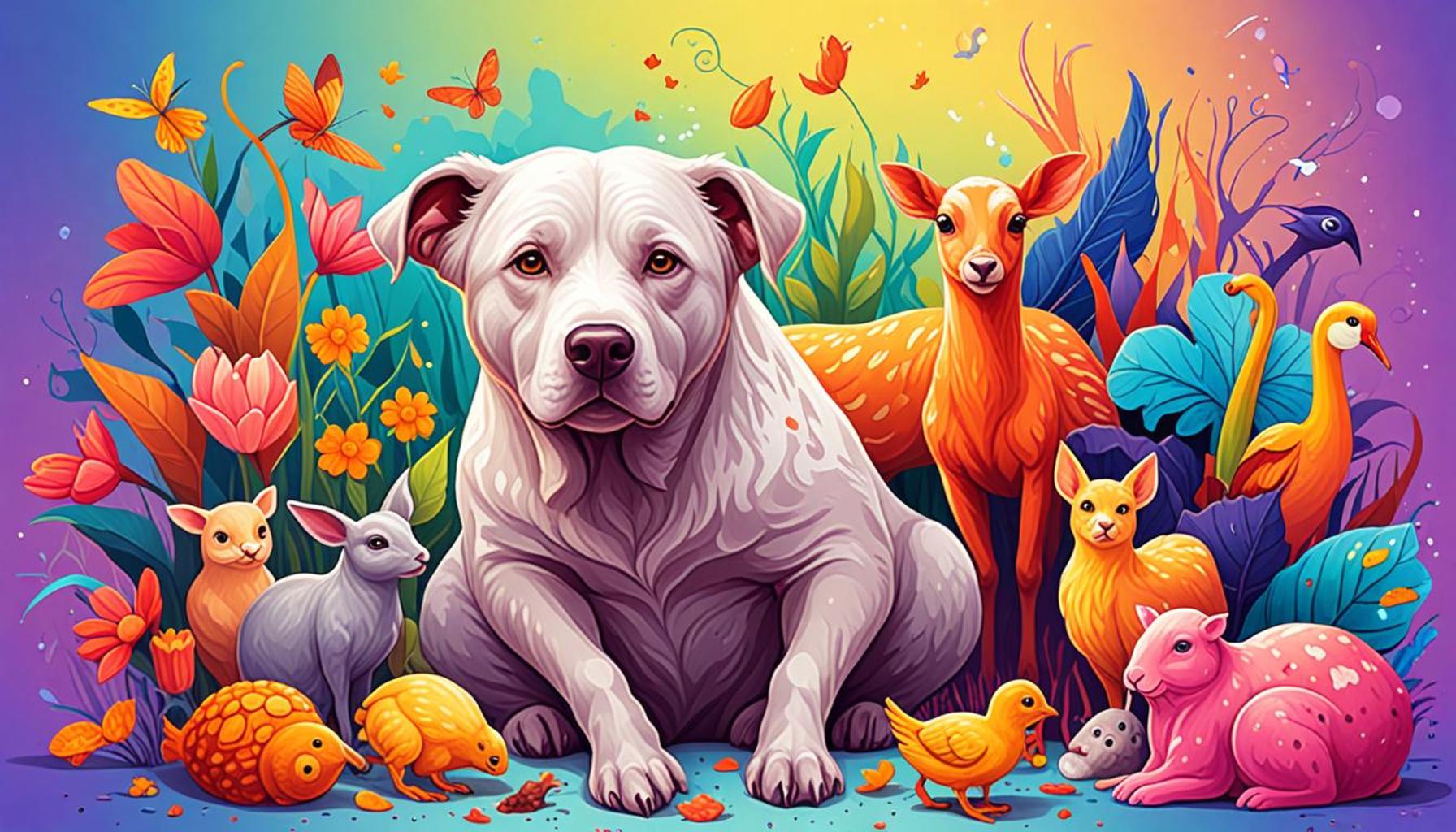The Role of Technology in Facilitating Animal Adoption: Innovative Apps and Platforms

Transformative Role of Technology in Animal Adoption
The shift toward digital solutions has not only streamlined the animal adoption process but has also created a more engaging environment for prospective pet owners. For instance, innovative apps such as Petfinder and Adopt-a-Pet have emerged, providing platforms where shelters and individuals listing animals for adoption can showcase their available pets. These apps are designed with user-friendly interfaces, ensuring that anyone, regardless of their tech-savviness, can navigate them easily. A user can simply swipe through photos and descriptions of animals, making it enticing to explore various options.
Moreover, the instant messaging capabilities of these platforms allow for immediate communication with shelters. This feature is particularly beneficial as it enables users to ask questions about the animals, such as their behavioral traits, medical history, and suitability for specific households. The ability to communicate in real-time can significantly reduce the wait time for potential adopters, enhancing the overall experience, which is crucial when making a decision about pet ownership.
Another key advancement is the incorporation of geolocation services. This technology helps prospective adopters discover nearby shelters or adoption events, encouraging community involvement and making it easier to find a new furry companion close to home. For example, an individual using an adoption app in Chicago can quickly look up local shelters or upcoming adoption fairs, thereby increasing the likelihood of a successful match between shelter animals and potential pet owners.
Importantly, these platforms also focus on promoting responsible adoption and pet ownership through a wealth of educational resources. Users can access valuable information regarding pet care, training tips, and the responsibilities that come with pet ownership. By equipping potential adopters with knowledge, these tools ensure that they make informed decisions, ultimately leading to fewer animals being returned to shelters.
Leveraging Data Analytics and Social Media
As these technological solutions evolve, many are increasingly leveraging data analytics to enhance user engagement and make better matches between pets and their new families. For instance, analytics can track user preferences and behavior, allowing platforms to suggest animals that closely align with the adopter’s lifestyle and needs. This not only improves the chances of successful adoptions but also fosters a deeper connection between pets and their new owners.

Additionally, social media has become an indispensable tool in animal adoption. Shelters often utilize platforms like Instagram and Facebook to showcase their animals, posting adorable photos and success stories that resonate with a broader audience. This kind of exposure not only increases the reach of adoption efforts but also cultivates a sense of community among animal lovers. People are likely to share these posts, amplifying the voices of animals in need and drawing attention to the issue of pet homelessness in their communities.
As we continue into the future, the ongoing integration of technology in the adoption sphere promises to not only streamline the process but also foster a deeper appreciation for pet ownership while addressing critical issues like pet homelessness. The combination of accessibility, education, and engagement is redefining how individuals find their perfect pet, thereby contributing positively to the welfare of animals across the nation.
LEARN MORE: Click here for essential adoption tips
Revolutionizing Pet Adoption Through Technology
The evolution of technology in recent years has fundamentally transformed the landscape of animal adoption, addressing long-standing challenges faced by shelters and prospective pet owners. One of the most striking advancements has been the integration of mobile applications designed specifically for adoption purposes. These apps not only simplify the process of finding pets but also enrich the overall experience of potential adopters.
Leading the charge are platforms like Petfinder and Adopt-a-Pet, which host extensive databases of animals in need of homes. These applications allow users to search for pets based on a variety of filters such as breed, age, and size, making it easier for families to find a companion that best fits their lifestyle. With millions of animals entering shelters each year, such accessibility is crucial—it empowers adopters to make informed decisions quickly and efficiently.
Moreover, the rich media capabilities of these platforms allow for a more immersive experience. High-quality photos, engaging videos, and detailed biographies give potential adopters a deeper insight into the animals’ personalities and needs. This aspect is vital in fostering an emotional connection before a visit to the shelter, which is often one of the most critical steps in the adoption process. By seeing an animal’s playful spirit or affectionate nature through a video, a user may feel encouraged to meet and potentially adopt that pet without hesitation.
In addition, many of these apps have begun incorporating virtual reality (VR) features, which offer a novel way for adopters to interact with animals. By using VR technology, users can experience a simulated environment where they can play with a virtual pet, helping them gauge their compatibility before making a commitment. This innovative approach not only captivates potential adopters but also reduces the stress experienced by shelter animals during the introduction process.
Enhancing Communication and Community Engagement
The integration of instant messaging within adoption platforms also facilitates immediate communication between potential adopters and shelters. Users can ask questions about an animal’s suitability regarding children, other pets, or specific living conditions, which drastically shortens response times and improves communication clarity. By connecting directly with shelter staff, potential adopters feel more supported and informed throughout the decision-making process.
Furthermore, these platforms are instrumental in fostering a sense of community around animal adoption. Through social media integration, users can share their adoption journeys, post updates, and even participate in local events. The importance of community cannot be overstated; engaging a network of supporters and fellow adopters not only spreads awareness about pet homelessness but also encourages responsible ownership. As prospective adopters witness others finding joy with their newly adopted pets, they are more likely to embark on their own journey of pet ownership.
- User-friendly mobile applications
- Virtual reality features for immersive experiences
- Instant messaging for real-time communication
- Social media integration to foster community engagement
As technology continues to advance, its potential to reshape the animal adoption process becomes increasingly apparent. The ability to blend accessibility with emotional engagement creates a dynamic that not only encourages adoption but also enhances the quality of interactions between adopters and their future pets.
The landscape of animal adoption has significantly transformed with the advent of innovative technology. These advancements have not only enhanced the way potential pet owners connect with animals in need of homes but have also streamlined the adoption process, making it more accessible and efficient.
One of the most compelling aspects of this transformation is the rise of specialized mobile applications. Apps such as Adopt-a-Pet and Petfinder have made it easier than ever for users to browse adoptable pets from various shelters and rescues. By utilizing user-friendly interfaces, these platforms allow prospective pet adopters to filter based on breed, size, age, and even location, catering to their specific preferences. This tailored approach increases the chances of finding the right match, thereby improving the overall adoption experience.
In addition, the integration of social media in adoption platforms has created a community-driven approach to animal rescue. Shelters and rescue organizations are leveraging platforms like Facebook and Instagram to showcase animals and share their stories, resulting in increased engagement and awareness. This visibility can attract donations, foster care offers, and ultimately lead to more successful adoptions. It is not just about adopting; it’s about building a network of advocates who are passionate about helping animals in need.
Furthermore, technological innovations like virtual reality (VR) are beginning to play a role in animal adoption. Some organizations are experimenting with VR to allow prospective adopters to experience the shelter environment and interact with pets remotely. This immersive experience can help reduce anxiety for both the adopters and the animals while promoting a strong emotional connection before a potential meet-and-greet.
With the growing reliance on technology, it’s essential to also consider the importance of education and resources available through these platforms. Many adoption apps provide valuable information on pet care, training tips, and post-adoption support, ensuring that new pet owners have the tools they need to make informed decisions and maintain successful pet ownership.
As technology continues to evolve, so too will its role in enhancing animal adoption rates and improving the welfare of pets in need. Each innovation brings with it the potential to create new pathways to connect loving homes with furry companions, ultimately benefiting animals and society alike.
| Advantages of Technology | Impact on Animal Adoption |
|---|---|
| Enhanced Accessibility | Users can view adoptable pets from the comfort of their homes. |
| Community Engagement | Social media platforms promote awareness and foster community support for rescues. |
DISCOVER MORE: Click here to learn about balanced nutrition for your pet
Pioneering Technology for Better Pet Matches
As the world embraces a tech-savvy era, numerous innovative platforms have emerged that go beyond simple matching of pets and potential owners. Cutting-edge algorithms are at the heart of many of these services, aimed at ensuring that pets are paired with the right adopters. Platforms such as Pawtential use advanced AI technology to analyze user preferences and lifestyle factors, making personalized recommendations of animals that suit their unique situation. From activity levels to household size, these refined matching tools enable prospective pet owners to discover companions that harmonize with their way of life.
Moreover, a significant aspect of the adoption process involves ongoing support after the initial match is made. Apps like BarkBuddy or Humane Society’s mobile app provide new pet owners with resources on training, health check-ups, and overall pet care. This is particularly important given that research indicates that around 20% of adopted animals are returned to shelters due to behavioral issues arising from inadequate preparation. By utilizing these platforms, new owners can access valuable tips and guidance, strengthening the bond with their pets and reducing the likelihood of abandonment.
The role of data analytics also cannot be overlooked in modern pet adoption. Organizations and shelters can analyze trends in adoption rates, popular breeds, and even peak adoption times. Such insights allow shelters to strategically plan their outreach efforts and resource allocation. For example, if a certain breed is trending in popularity, shelters can utilize this information to tailor their marketing campaigns, ensuring that prospective owners find the breeds they are looking for. This data-driven approach not only increases the efficiency of the adoption process but ultimately leads to a greater number of pets finding homes.
Adopting Through the Cloud: Remote Adoption Features
Remote adoption features have become increasingly prevalent due to the evolving nature of society, particularly during and after the COVID-19 pandemic. Virtual tours of shelters and video conferencing are being adopted by organizations, allowing potential adopters to meet animals in a low-pressure environment from the comfort of their homes. Platforms like RescueGroups and Zoom adoption events enable shelters to connect with a broader audience, facilitating adoptions that previously might have been out of reach due to geographical limitations.
Technology also plays a role in post-adoption follow-ups. By harnessing cloud-based systems, shelters can easily track their adopted animals and maintain contact with new families. Follow-up messaging and reminders for veterinary appointments can be automated, ensuring that both the adopter and pet have ongoing support. Research shows that post-adoption engagement significantly increases the rate of successful adoptions and helps to reduce return rates. This proactive follow-up not only safeguards the well-being of the pet but also fosters a deeper connection between adopters and their adopted companions.
- Advanced A.I. algorithms for personalized pet matching
- Ongoing support in health and training for new pet owners
- Data analytics shaping adoption strategies and marketing
- Remote adoption features expanding reach through virtual platforms
- Cloud-based follow-up systems ensuring post-adoption success
As innovation continues to drive the pet adoption process, the combination of cutting-edge technology and empathetic practices is creating transformative pathways for both animals and prospective owners. The seamless blending of user experience with care standards is fostering a future where animal adoption is both fulfilling and responsible.
DON’T MISS: Click here to learn more about keeping your pets healthy
Conclusion: A Future of Compassionate Connections
The integration of technology in the animal adoption process is not merely a trend; it represents a significant evolution in how shelters and potential adopters engage. By utilizing advanced AI algorithms, platforms are enabling smarter and more personalized pet matches that consider not just the preferences of the adopters but also the well-being and behavioral needs of the pets. This level of compatibility is crucial in fostering lasting relationships that ultimately reduce the rate of returns to shelters.
Moreover, the provision of ongoing support through apps like BarkBuddy and cloud-based systems is paving the way for informed and responsible pet ownership. New pet owners are empowered with resources that help them navigate the complexities of pet care, which can significantly improve the post-adoption experience. With data analytics guiding shelter strategies, organizations are better equipped to meet the demand while maximizing the outreach and efficiency of their efforts.
Additionally, the surge in remote adoption features has transformed the landscape by making it accessible for individuals to connect with pets without geographical barriers. Virtual adoption events and online platforms have opened doors to countless loving homes that may have previously been unreachable. As we look ahead, it is clear that technology will continue to play a pivotal role in shaping the future of animal adoption.
In conclusion, the melting pot of innovation, data-driven strategies, and emotional intelligence is fostering a brighter future for animal welfare. Adopters, shelters, and community members should embrace these platforms wholeheartedly, for they are not only facilitating the adoption of pets but also cultivating a culture of compassion and responsible ownership across the United States.


